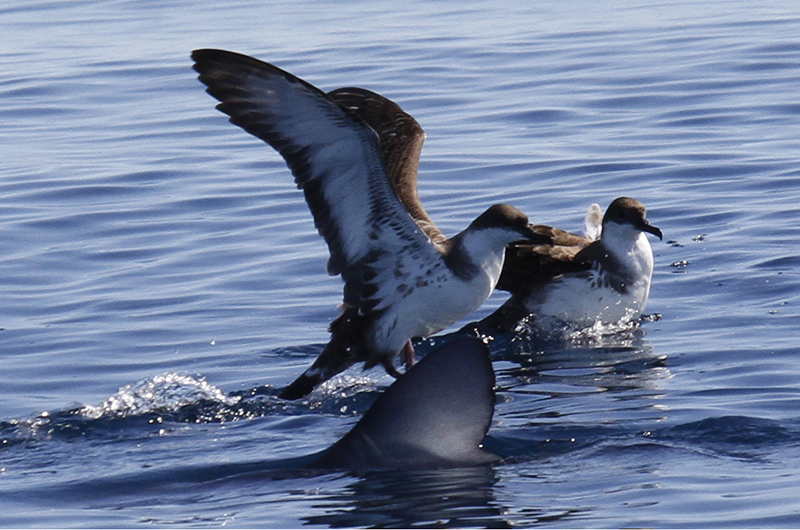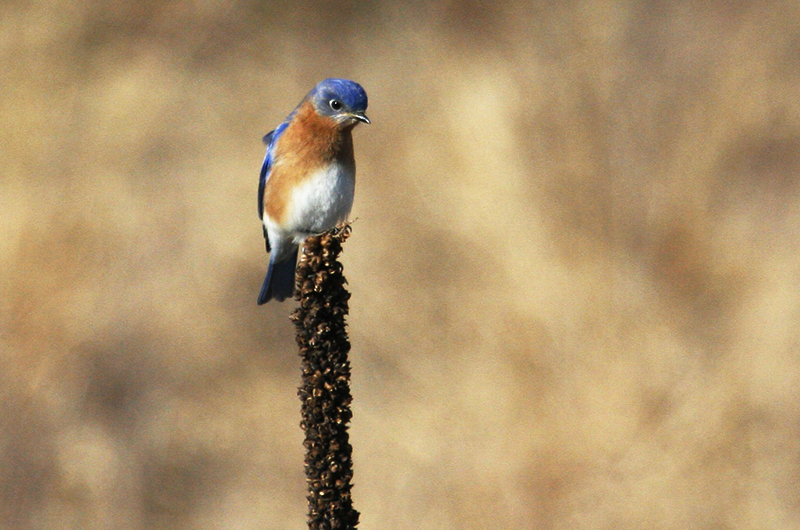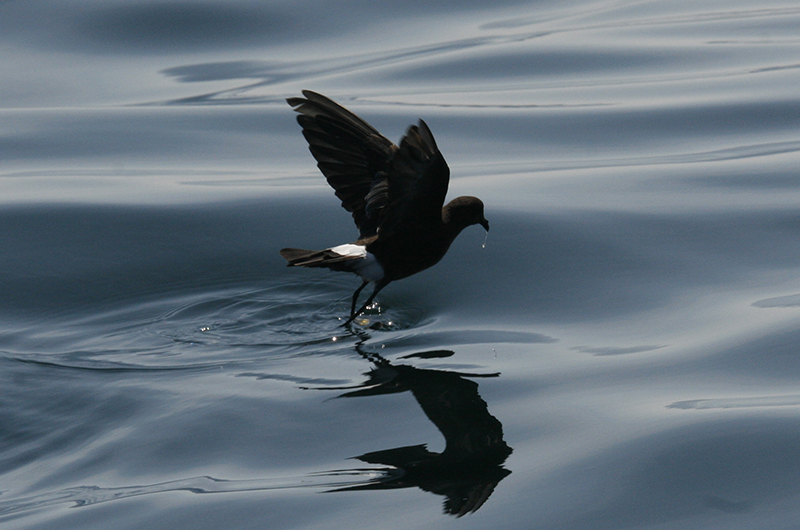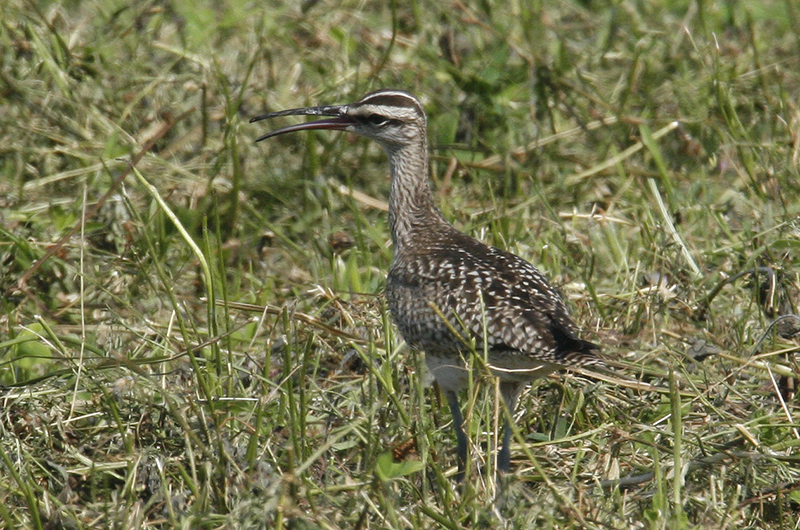Long narrow wings and a fairly robust body, running along the water’s surface to become airborne, oceanic and a tube on top of their beaks to excrete excess salt. All are characteristics of shearwaters. We do not often see them from the Vineyard and when we do they are often near the horizon, undulating up and down in a stiff-winged manner known as dynamic soaring.
Shearwaters are more prevalent out to sea, closer to the warm waters of the Gulf Stream and well to our southeast beyond the continental slope, where there are a series of underwater mountains – seamounts – that are biologically very productive. They venture closer to land when they are carried by high winds and storms, when eddies of warm water spin off the Gulf Stream bringing all sorts of critters to the Island and during their annual migration.
David Stanwood observed a lot of shearwaters on Vineyard Sound on July 26, and John Nelson, captain of the fishing boat Skipper out of Oak Bluffs, observed 15-20 greater shearwaters out on Hedge Fence, which is in Nantucket Sound east of Oak Bluffs. He also observed two Wilson’s storm-petrels and lots of laughing gulls out there. And, as mentioned in last week’s column, David Benvent spotted a Cory’s shearwater at Long Point on July 22.
Most shearwaters (greater, Cory’s and sooty) breed on islands in the Southern Hemisphere’s summer from November to April. Then they migrate northward from South America to North America to experience our summer. Many of them will eventually migrate to Europe on their way south back to their breeding colonies. Imagine that – two summers and no winters!
Manx shearwaters are a little different, as they breed on both sides of the Atlantic Ocean, including a small population that breeds on Penikese Island (near Cuttyhunk) and maybe Nomans Land.
Erica Mason observed another pelagic species, likely a common murre, in Edgartown Harbor on July 25.
Other Sightings
Lanny McDowell spotted a whimbrel as it flew away from him on July 28 at Black Point Pond. To me, these large sandpipers with long down-curved bills signal the beginnings of the southbound migration; 20 to 30 years ago they showed up around the Fourth of July but in recent years late July seems more accurate. He also observed both lesser and greater yellowlegs.
Two other new arrivals for the southward migration were at Little Beach on July 30. Jeff Bernier observed five red knots and that same afternoon I observed seven sanderlings in their bright breeding plumage. Other shorebirds I observed included 10 greater yellowlegs, three ruddy turnstones, three laughing gulls and a short-billed dowitcher. These species were absent on my July 28 guided birding tour, although we found eastern willets, American oystercatchers, piping plovers, least sandpipers, semipalmated sandpipers, semipalmated plovers, least terns, common terns and black skimmers. Jeff Bernier also spotted a juvenile spotted sandpiper, topping off a fairly comprehensive list.
The July 30 Early Birders program at Felix Neck spotted Baltimore orioles, American oystercatchers and spotted sandpipers. That same day, David Padullo walked around the Farm Institute and spotted barn swallows, a yellow warbler, a ruby-throated hummingbird and an eastern kingbird.
Warren Woessner observed a flock of eight black scoters off the cliffs at Gay Head on July 30; this species is normally a winter resident. He also spotted an immature lesser black-backed gull July 26 on Norton Point.
Sarah Mayhew spotted another eastern kingbird at Quansoo on July 29.
John Nelson reports from Harthaven, where he observed a large flock – “zillions” – of tree swallows over July 28 through 30, a large female Cooper’s hawk, and juvenile hummingbirds at his feeders. He also comments that the normal butterflies he sees at this time of the year (painted ladies, American ladies and various swallowtails) are scarce this summer.
Nancy Slate saw cedar waxwings in her yard on July 29. Their slightly trilled calls can often be heard before they are seen.
On July 26, Jeff Bernier spotted a yellow-crowned night-heron at Sheriff’s Meadow Sanctuary.
Susan McCoy has been watching a family of wood ducks as they grow up in a little pond at Makonikey for the past two weeks
Bobwhite quail are sighted frequently from Squibnocket to Panhandle Road these days. Hopefully most of them are a bit more sensible than the two I saw near Brookside Farm on July 30 – they did not get out of the road as I drove past. Fortunately, nobody was coming in the opposite direction!
The breeding season is winding down and southbound migrant have started to show up. Please report all your sightings to birds@mvgazette.com.
Robert Culbert leads Saturday morning Guided Birding Tours and is an ecological consultant living in Vineyard Haven.













Comments
Comment policy »